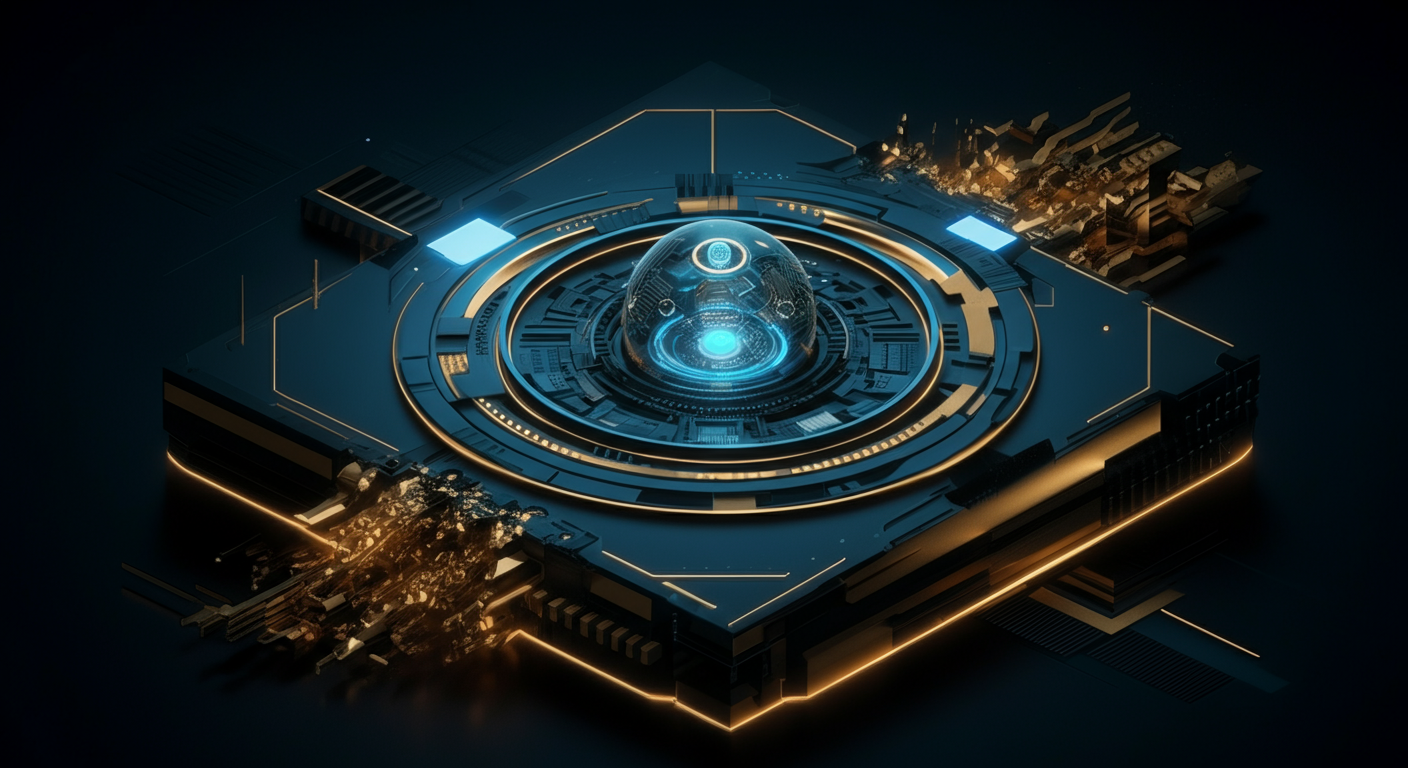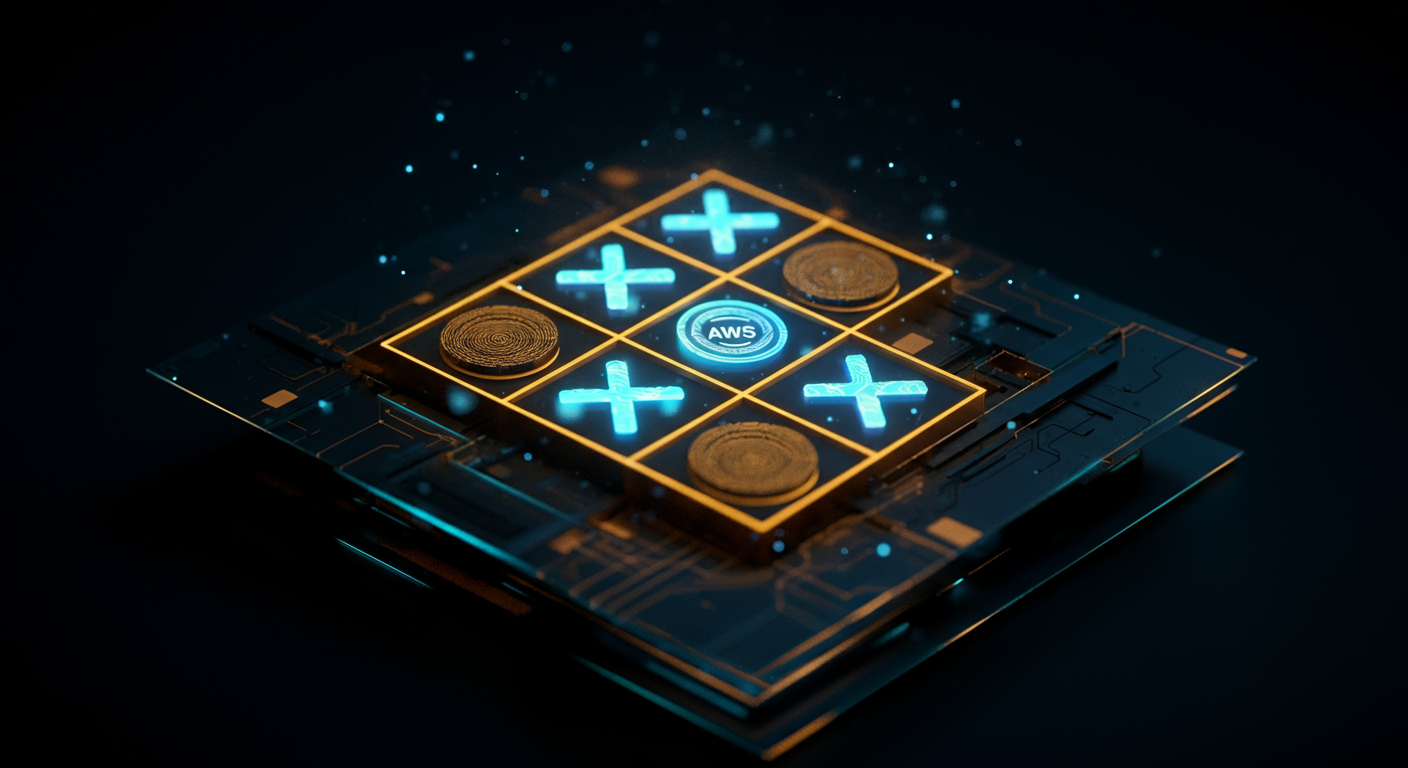Mastering Agentic Deep Reinforcement Learning: A Comprehensive Guide to Curriculum Learning, Adaptive Exploration, and Meta-Level Planning

Agentic Deep Reinforcement Learning (ADRL) is revolutionizing how AI tackles complex tasks.
Introduction to Agentic Deep Reinforcement Learning (ADRL)
Agentic Deep Reinforcement Learning Definition describes a cutting-edge field blending the autonomous decision-making of agents with the raw power of deep learning. Traditional Deep Reinforcement Learning struggles in environments demanding sophisticated planning and adaptation, but ADRL rises to the challenge.
Core Concepts of ADRL
At its heart, ADRL involves:- Agents: Autonomous entities perceiving their environment and taking actions.
- Environments: The world in which the agent operates, providing feedback to the agent's actions.
- Rewards: Signals indicating the desirability of the agent's actions in a given state.
- Policies: The agent's strategy for choosing actions based on its current state.
Overcoming Traditional DRL Challenges
Traditional DRL often falls short in complex and dynamic environments due to:- Sample inefficiency: Requires vast amounts of training data.
- Poor generalization: Struggles to adapt to unseen scenarios.
- Difficulty in exploration: Fails to effectively explore the environment to discover optimal policies.
Advanced Techniques for ADRL
ADRL overcomes these limitations using techniques like:- Curriculum Learning: Gradually introduces complexity in training scenarios.
- Adaptive Exploration: Adjusts the exploration strategy based on the agent's learning progress.
- Meta-Level Planning: Allows the agent to plan at a higher, more abstract level.
Real-World Applications
The potential applications of ADRL are vast:- Robotics: Creating robots capable of complex manipulation and navigation.
- Autonomous Driving: Developing self-driving cars that can handle unpredictable real-world conditions.
- Game Playing: Training AI to master complex games requiring strategic planning.
Here's how to design curriculum learning for DRL agents:
Curriculum Learning for Enhanced Training
Curriculum learning in deep reinforcement learning (DRL) isn't about memorizing facts, it's about building a strong foundation, much like teaching a child to walk before running. It involves training an agent on a series of tasks of increasing difficulty. By progressively challenging the agent, we guide it towards more stable and efficient learning.
Strategies for Effective Curriculum Design
Several approaches exist, each with its own strengths:- Self-Play: Agents learn by competing against themselves. AlphaGo is a prime example, where the system improved by playing against previous versions of itself.
- Teacher-Student: A "teacher" agent, already proficient at the task, generates training examples for a "student" agent.
- Domain Randomization: Training occurs in a highly varied simulated environment. The agent learns to generalize, enabling it to perform well in the real world. Think training a robot arm to grasp objects, but with randomized lighting, object textures, and joint stiffness.
Stability and Convergence Boost
Curriculum learning can significantly improve training, fostering more stable learning and faster convergence.By starting with simpler tasks, the agent can quickly learn basic skills, reducing the risk of getting stuck in local optima.
Designing Effective Curricula: Techniques
How to design curriculum learning for DRL agents? Here are some specific techniques:- Start Simple: Begin with easy, solvable environments.
- Gradual Progression: Incrementally increase task complexity.
- Monitor Performance: Track agent performance and adjust the curriculum accordingly.
- Automatic Curriculum Generation: Employ algorithms to dynamically generate curricula based on the agent's learning progress. This requires balancing exploration and exploitation.
Challenges in Automatic Curriculum Generation
Automatically generating effective curricula is tough, it requires:- Defining appropriate difficulty metrics.
- Balancing exploration and exploitation.
- Avoiding catastrophic forgetting.
Here's how Agentic Deep Reinforcement Learning (ADRL) tackles the crucial problem of exploration in reinforcement learning.
The Exploration-Exploitation Tightrope
In reinforcement learning, agents face a fundamental dilemma: should they exploit their current knowledge to maximize immediate rewards, or explore the environment to discover potentially better strategies in the long run? Adaptive exploration techniques aim to strike the right balance, adjusting exploration based on the agent's experience.
Adaptive Exploration Strategies
Several strategies dynamically adjust the level of exploration:
- Epsilon-Greedy: This classic approach selects the best-known action most of the time but occasionally (with probability epsilon) chooses a random action. A common adaptation is to decay epsilon over time, shifting from exploration to exploitation.
- Boltzmann Exploration (Softmax): Actions are chosen based on a probability distribution derived from their estimated values. Higher-valued actions have a greater chance of being selected, but less certain actions still have a non-zero probability.
- Upper Confidence Bound (UCB): UCB methods add an "exploration bonus" to the estimated value of each action, reflecting the uncertainty in that estimate. Actions with higher uncertainty are thus explored more. This is especially useful when integrating with tools like Pinecone, to explore new document chunks.
Adapting to the Agent and Environment
The best exploration strategy isn't one-size-fits-all. A sophisticated ADRL agent must consider:
- The agent's current knowledge: Is it a fresh beginner or seasoned expert?
- The complexity of the environment: A simpler task needs less exploration than a complex one.
- The type of environment: Is it stochastic or deterministic?
Advantages Over Fixed Strategies
Fixed strategies use a pre-set level of exploration throughout training. Adaptive methods are superior because:
- Faster Learning: By focusing exploration where it's most needed, agents learn faster.
- Better Performance: Agents discover better policies, especially in complex environments.
- Increased Robustness: Adaptive exploration makes agents more resilient to changes in the environment.
Real-World Examples
Imagine an AI-powered marketing tool using CopyAI to generate ad copy. Adaptive exploration could involve A/B testing different styles of headlines more frequently when click-through rates are low. Another example could be an autonomous driving system: adaptive exploration might involve exploring new routes more frequently in areas with sparse data.
In summary, Adaptive Exploration Strategies in Reinforcement Learning are critical for efficient and robust learning, enabling agents to master complex tasks by intelligently balancing exploration and exploitation. Next, let's explore Curriculum Learning in ADRL to further boost AI agent development.
Meta-level planning elevates Agentic Deep Reinforcement Learning (ADRL) by enabling agents to reason about their own learning process, leading to enhanced long-term performance and robustness.
Understanding Meta-Level Planning
Meta-level planning in ADRL involves an agent strategically deciding how to learn, rather than just what to do in the environment. This is crucial for navigating complex, uncertain environments where the optimal learning strategy isn't immediately obvious. It allows the agent to adapt its learning process over time, optimizing for efficiency and effectiveness.Meta-Level UCB Algorithm
The Upper Confidence Bound (UCB) algorithm is a key component in meta-level planning. It helps the agent balance exploration of new learning strategies with exploitation of known successful ones. The UCB algorithm estimates the potential reward of each strategy, factoring in both the observed reward and the uncertainty associated with the estimate. This encourages exploration of less-tried strategies that might be highly rewarding, while still leveraging strategies that have proven effective.Think of it like choosing restaurants: UCB encourages you to try new places (exploration) while still going back to your favorite spots (exploitation).
How UCB Improves Agent Learning
Meta-level UCB planning enables agents to reason about their own learning process. By using UCB, agents can:- Adaptively adjust exploration: Agents can decide when to explore new learning strategies based on their current understanding and the potential for improvement.
- Optimize long-term performance: Reasoning about the learning process allows agents to focus on strategies that yield better long-term results, even if they require more initial effort.
- Enhance robustness: Agents can adapt their learning approach in response to changes in the environment, making them more resilient.
Computational Challenges
Meta-level planning can be computationally intensive. Reasoning about learning strategies adds another layer of complexity. Potential solutions include:- Approximation techniques: Using function approximation methods to estimate the value of different learning strategies.
- Hierarchical planning: Breaking down the meta-level planning problem into smaller, more manageable subproblems.
- Meta-learning: Training a meta-learner to predict the best learning strategy for a given environment.
Agentic Deep Reinforcement Learning, get ready to build!
Here’s a breakdown of how to construct an Agentic Deep Reinforcement Learning (ADRL) system, combining algorithms and frameworks with curriculum learning, adaptive exploration, and even meta-level planning.
Algorithm and Framework Selection
First, select your tools. Think TensorFlow or PyTorch for the deep learning backbone. Then, OpenAI Gym provides environments for initial testing and benchmarking.Choosing the right algorithm can be tricky. Consider starting with DQN, then move to more sophisticated policy gradient methods like PPO.
Reward Function, State Representation, and Action Space
These are the fundamental building blocks.- Reward Function: Define what constitutes success for your agent.
- State Representation: How your agent perceives the world, ideally capturing relevant information.
- Action Space: The set of possible actions the agent can take. Is it discrete (like moving left, right, or jumping) or continuous (like applying a force between -1 and 1)?
Integrating ADRL Components
- Curriculum Learning: Structure the learning process, starting with easy tasks and gradually increasing difficulty. This helps the agent learn complex behaviors more effectively.
- Adaptive Exploration: Implement strategies like epsilon-greedy or Thompson sampling, adjusting exploration rates based on the agent's learning progress. This allows the agent to balance exploitation and exploration.
- Meta-Level Planning: Incorporate a higher-level controller that plans and guides the agent’s exploration. This adds a layer of reasoning to the learning process, enabling the agent to make strategic decisions about which tasks to tackle.
Debugging and Evaluation
Debugging is key. Monitor the agent's learning curve, track key metrics like reward, and visualize its behavior.That's a solid starting point to build your own ADRL system. You will be well on your way to developing agents that not only learn but also think.
Agentic Deep Reinforcement Learning (ADRL) is experiencing explosive growth, pushing the boundaries of what AI can achieve. Let's explore the advanced architectures and techniques driving this revolution.
Memory-Augmented Neural Networks
Traditional neural networks can struggle with long-term dependencies, but memory-augmented architectures, like Neural Turing Machines (NTMs) and Differentiable Neural Computers (DNCs), provide ADRL agents with external memory. These networks learn to read from and write to memory, enhancing their ability to handle complex, history-dependent tasks. For instance, an ADRL agent controlling a robot could use an external memory to store the locations of previously visited objects.Hierarchical Reinforcement Learning
Hierarchical Reinforcement Learning (HRL) breaks down complex problems into smaller, more manageable sub-problems. This approach mirrors how humans solve difficult tasks, promoting efficiency and scalability.HRL allows agents to learn high-level strategies and delegate tasks to lower-level sub-policies.
Benefits include:
- Improved exploration
- Faster learning
- Greater adaptability
Multi-Agent Reinforcement Learning (MARL)
Multi-Agent Reinforcement Learning (MARL) explores scenarios where multiple agents interact within a shared environment. Multi-Agent Systems for Cyber Defense: A Proactive Revolution highlights one potential application. The challenges lie in coordinating agent behaviors and managing the non-stationarity of the environment.Attention Mechanisms
Inspired by the "Attention is All You Need" paper, attention mechanisms enable ADRL agents to focus on the most relevant parts of their input. This is especially useful when processing high-dimensional sensory data. Self-attention, in particular, allows the agent to relate different parts of the same input to each other, improving its understanding of context.Transformer Architectures

The Transformer architecture, powered by self-attention, has become a cornerstone of modern ADRL. Its ability to process sequences in parallel makes it far more efficient than recurrent neural networks. The Paper That Changed AI Forever: How 'Attention Is All You Need' Sparked the Modern AI Revolution discusses this evolution in more detail. Transformers excel at tasks requiring long-range dependencies and have been successfully applied to diverse ADRL problems.
Advanced Deep Reinforcement Learning Architectures are rapidly evolving, incorporating memory, hierarchical structures, multi-agent systems, and attention mechanisms to create more capable and adaptable agents. As research progresses, we can expect even more sophisticated architectures to emerge, pushing the boundaries of AI. Next, we'll consider the future trajectory of Agentic Deep Reinforcement Learning.
Navigating the complex terrain of Agentic Deep Reinforcement Learning (ADRL) demands acknowledging existing roadblocks and charting paths for future exploration.
Scaling to Real-World Complexity
One of the biggest hurdles is scaling ADRL to real-world problems."While ADRL demonstrates promise in simulated environments, transferring these agents to complex, unstructured real-world scenarios presents significant challenges."
Consider this: can an agent trained to play chess flawlessly translate those skills to autonomously driving a car through rush-hour traffic? Not without significant adaptation. Techniques like transfer learning and meta-learning, mentioned later, are crucial for bridging this gap.
Safety and Robustness
Ensuring the safety and robustness of ADRL systems is paramount.- Adaptive exploration can be risky if not carefully controlled.
- Robustness to unexpected situations or adversarial attacks is essential.
Ethical Considerations
Ethical considerations are also critical, especially as ADRL systems become more autonomous. We must ask questions like:- Who is responsible when an ADRL system makes a mistake?
- How can we ensure these systems are fair and unbiased?
Emerging Research Areas
Exciting research areas are emerging that address these challenges:- Transfer learning: Enabling agents to leverage knowledge gained in one environment to accelerate learning in another.
- Continual learning: Allowing agents to adapt and learn continuously throughout their lifespan, without forgetting previous knowledge.
The Future of Agentic Deep Reinforcement Learning
The future of Agentic Deep Reinforcement Learning is ripe with possibility. We can anticipate:- Wider adoption across industries, from robotics to finance and healthcare.
- More sophisticated agents capable of solving complex, real-world problems.
Agentic Deep Reinforcement Learning (ADRL) is making waves, and its real-world applications are proving transformative.
ADRL in Robotics
ADRL is enabling robots to perform complex tasks in unstructured environments.- Problem: Traditional robotics often requires extensive manual programming and struggles with adaptability.
- ADRL Solution: Agentic AI empowers robots to learn from experience through trial and error, adapting to unforeseen circumstances.
- Results: Robots can now perform intricate assembly tasks, navigate dynamic warehouses, and even assist in surgical procedures with greater precision and autonomy.
Autonomous Driving
Imagine a self-driving car that not only navigates traffic but also optimizes its route based on real-time weather and traffic conditions using Reinforcement Learning.
ADRL plays a crucial role in enhancing the decision-making capabilities of autonomous vehicles.
- Problem: Ensuring safety and efficiency in unpredictable real-world driving scenarios.
- ADRL Solution: ADRL algorithms are trained to handle diverse driving conditions, predict potential hazards, and make optimal decisions.
- Business Value: This translates to safer, more efficient self-driving cars, reducing accidents and optimizing fuel consumption.
Game Playing
ADRL has achieved remarkable success in mastering complex games.- Problem: Traditional AI often relies on brute-force methods and struggles with strategic depth.
- ADRL Solution: By learning through self-play and adaptive exploration, ADRL agents develop sophisticated strategies and outmaneuver human players.
- Example: ADRL agents have conquered games like Go and StarCraft II, showcasing the ability to handle imperfect information and long-term planning.
Resource Management
ADRL is optimizing resource allocation across various industries.- Problem: Inefficient resource management leads to waste and increased costs.
- ADRL Solution: Applying ADRL to areas like energy distribution and supply chain management leads to optimized resource allocation and significant cost savings.
- Insight: ADRL learns to predict demand patterns and dynamically adjust resource distribution, minimizing waste and maximizing efficiency.
Agentic Deep Reinforcement Learning (ADRL) is pushing the boundaries of AI, demanding powerful tools for development.
Essential Software Libraries and Frameworks
For building ADRL models, certain software libraries and frameworks are indispensable:- TensorFlow: A comprehensive open-source library for numerical computation and large-scale machine learning. Its flexibility and extensive community support make it a staple.
- PyTorch: Known for its dynamic computation graph and Python-first approach, PyTorch is favored for research and rapid prototyping.
- JAX: Developed by Google, JAX combines NumPy with automatic differentiation and accelerated linear algebra, crucial for high-performance ADRL.
Simulation Environments
ADRL agents learn through interaction with environments. Key simulation environments include:- OpenAI Gym: A toolkit for developing and comparing reinforcement learning algorithms.
- DeepMind Lab: A 3D learning environment for agent-based AI research.
Online Courses, Tutorials, and Research Papers
Continuous learning is vital. Explore these resources to deepen your understanding:- Online courses on platforms like Coursera and Udacity.
- Research papers published in journals like JMLR and NeurIPS. Consider searching AI news for updates in ADRL breakthroughs.
- Tutorials available on Towards Data Science and personal blogs.
Open-Source ADRL Projects and Code Repositories
Leverage existing work:- Explore GitHub for open-source ADRL projects.
- Contribute to the community and learn from the code of others.
By utilizing these Agentic Deep Reinforcement Learning Tools, you can pave the way for sophisticated AI agents capable of solving complex, real-world problems. Now, onward to building truly intelligent systems!
Conclusion: The Transformative Power of ADRL

Agentic Deep Reinforcement Learning (ADRL) isn't just an incremental improvement; it's a paradigm shift in how we approach complex problem-solving with AI. ADRL integrates the power of deep learning with the autonomous decision-making of agents, unlocking new possibilities for creating intelligent, adaptive systems.
Here's a recap of the key concepts:
- Curriculum Learning: Training agents progressively, starting with easier tasks and gradually increasing complexity, much like a human student learning a new subject.
- Adaptive Exploration: Enabling agents to intelligently explore their environment, balancing exploration and exploitation to discover optimal strategies efficiently.
- Meta-Level Planning: Equipping agents with the capacity to plan at a higher level, considering long-term goals and adapting their strategies based on changing circumstances.
ADRL's potential extends far beyond autonomous vehicles. From optimizing supply chains to creating personalized learning experiences, the possibilities are vast. As researchers and developers, we are only beginning to scratch the surface of what ADRL can achieve.
Now is the time to experiment with tools like ChatGPT, integrate these ADRL concepts into your projects, and contribute to the ongoing research shaping the future of AI. Further exploration of Agentic AI and Reinforcement Learning can be found at our Learn section and our AI Glossary. The journey towards truly intelligent, autonomous systems has only just begun.
Keywords
Agentic Deep Reinforcement Learning, ADRL, Curriculum Learning, Adaptive Exploration, Meta-Level Planning, Reinforcement Learning, Deep Learning, Artificial Intelligence, Autonomous Agents, UCB Algorithm, Exploration-Exploitation Dilemma, Hierarchical Reinforcement Learning, Multi-Agent Reinforcement Learning, Transformer Architecture, Robotics, Autonomous Driving, Game Playing
Hashtags
#AgenticAI #DeepRL #ReinforcementLearning #AIagents #AutonomousSystems
Recommended AI tools

Your AI assistant for conversation, research, and productivity—now with apps and advanced voice features.

Bring your ideas to life: create realistic videos from text, images, or video with AI-powered Sora.

Your everyday Google AI assistant for creativity, research, and productivity

Accurate answers, powered by AI.

Open-weight, efficient AI models for advanced reasoning and research.

Generate on-brand AI images from text, sketches, or photos—fast, realistic, and ready for commercial use.
About the Author

Written by
Dr. William Bobos
Dr. William Bobos (known as 'Dr. Bob') is a long-time AI expert focused on practical evaluations of AI tools and frameworks. He frequently tests new releases, reads academic papers, and tracks industry news to translate breakthroughs into real-world use. At Best AI Tools, he curates clear, actionable insights for builders, researchers, and decision-makers.
More from Dr.

